Abstract
OBJECTIVES: This study examined the extreme medical unemployment and underemployment in the urban areas of Mexico. The conceptual and methodological approach may be relevant to many countries that have experienced substantial increases in the supply of physicians during the last decades. METHODS: On the basis of 2 surveys carried out in 1986 and 1993, the study analyzed the performance of physicians in the labor market as a function of ascription variables (social origin and gender), achievement variables (quality of medical education and specialty studies), and contextual variables (educational generation). RESULTS: The study reveals, despite some improvement, persistently high levels of open unemployment, qualitative underemployment (i.e., work in activities completely outside of medicine), and quantitative underemployment (i.e., work in medical activities but with very low levels of productivity and remuneration). The growing proportion of female doctors presents new challenges, because they are more likely than men to be unemployed and underemployed. CONCLUSIONS: While corrective policies can have a positive impact, it is clear that decisions regarding physician supply must be carefully considered, because they have long-lasting effects. An area deserving special attention is the improvement of professional opportunities for female doctors.
Full text
PDF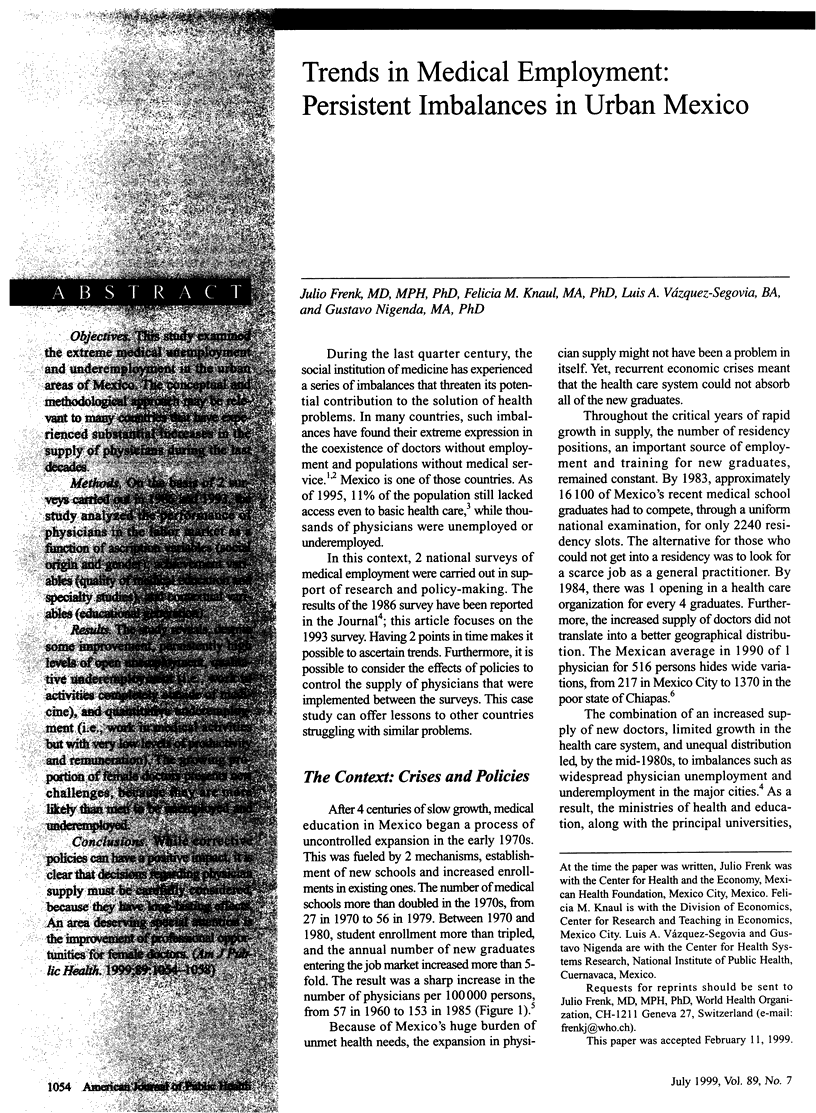
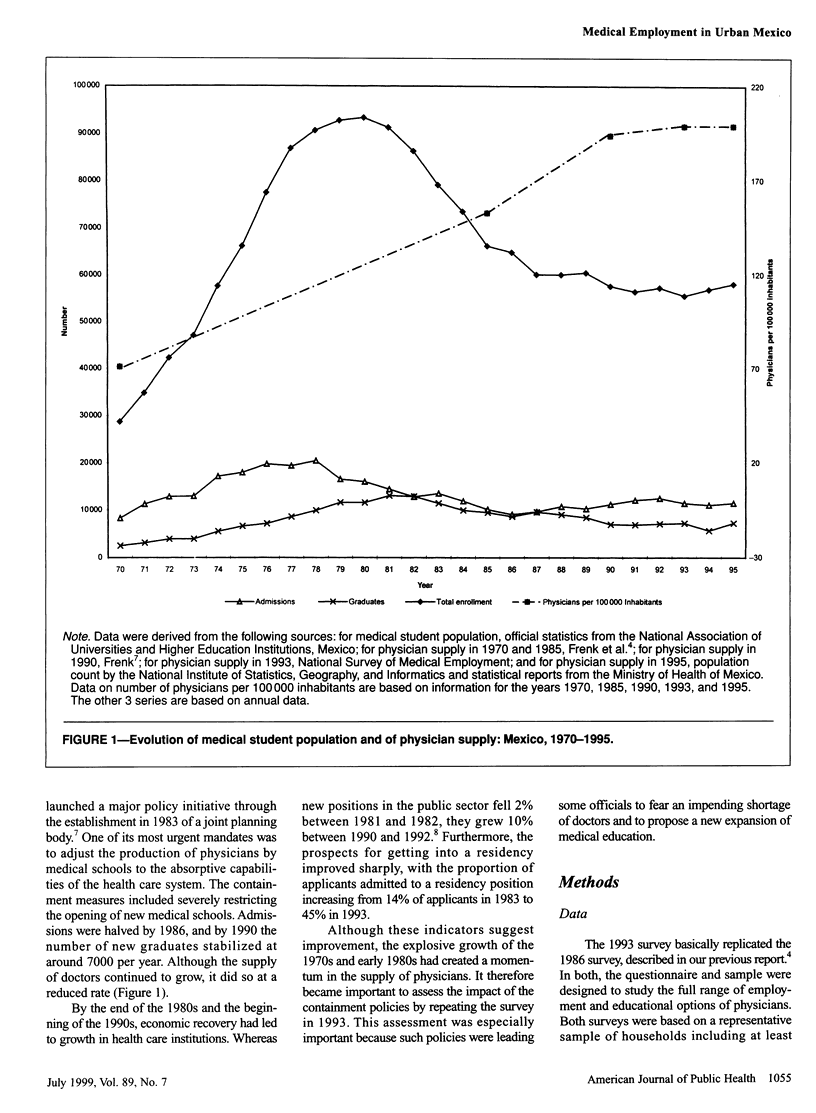
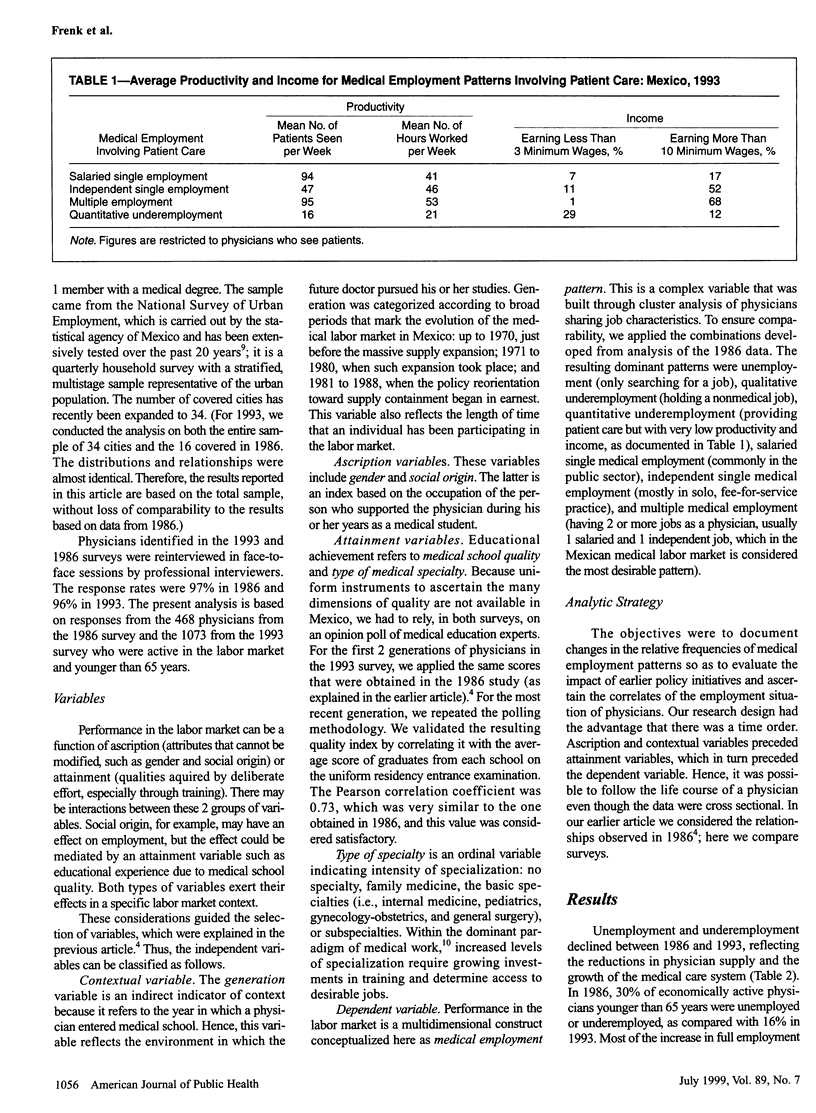
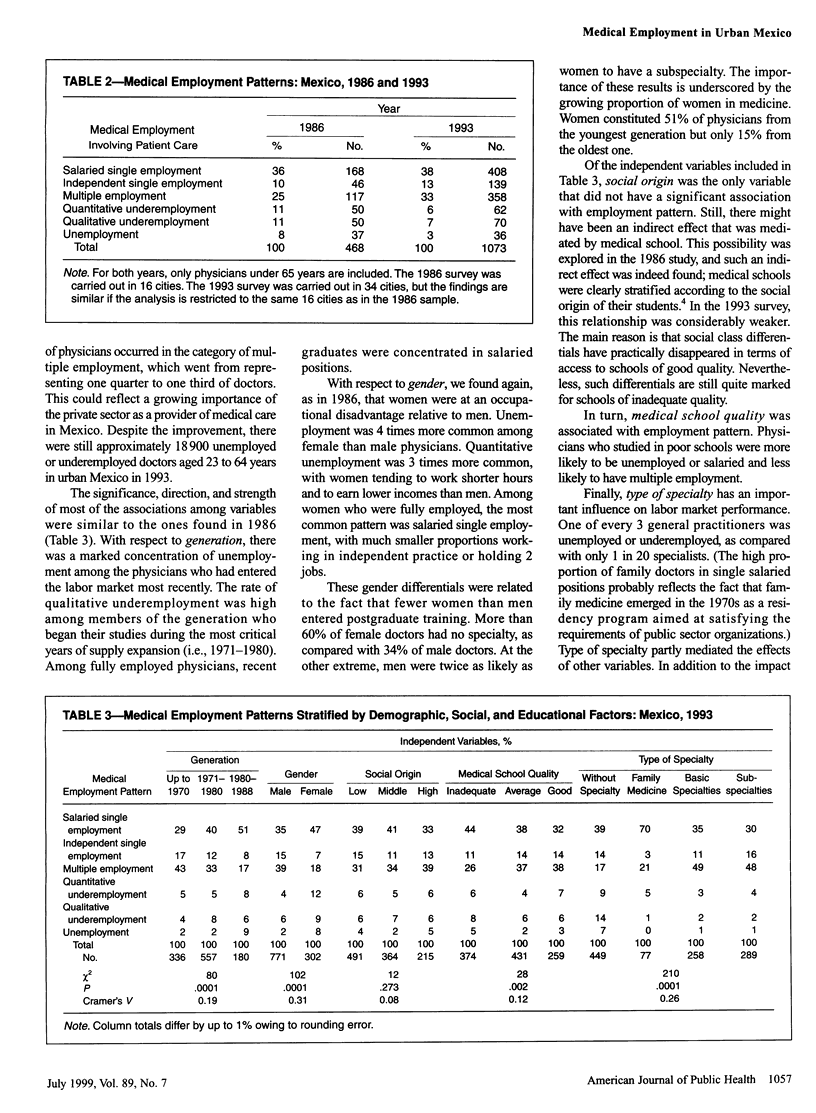
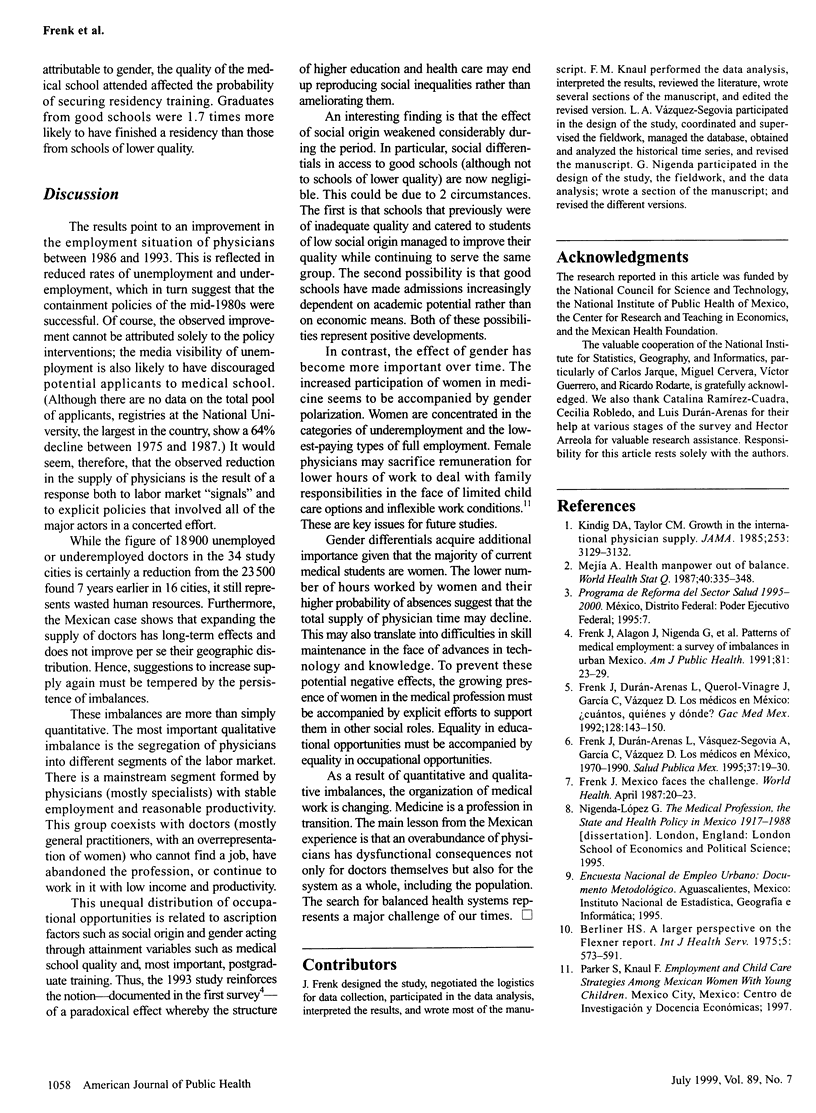
Selected References
These references are in PubMed. This may not be the complete list of references from this article.
- Berliner H. S. A larger perspective on the Flexner report. Int J Health Serv. 1975;5(4):573–592. doi: 10.2190/F31Q-592N-056K-VETL. [DOI] [PubMed] [Google Scholar]
- Frenk-Mora J., Durán-Arenas L., Querol-Vinagre J., García C., Vázquez D., Villalpando-Casas J. de J., Narro J., Ruelas E., García-Rojas M., Durán L. Presente y futuro de la profesión médica. Gac Med Mex. 1992 Mar-Apr;128(2):143–161. [PubMed] [Google Scholar]
- Frenk J., Alagon J., Nigenda G., Muñoz-delRio A., Robledo C., Vaquez-Segovia L. A., Ramírez-Cuadra C. Patterns of medical employment: a survey of imbalances in urban Mexico. Am J Public Health. 1991 Jan;81(1):23–29. doi: 10.2105/ajph.81.1.23. [DOI] [PMC free article] [PubMed] [Google Scholar]
- Frenk J., Durán-Arenas L., Vázquez-Segovia A., García C., Vázquez D. Los médicos en México, 1970-1990. Salud Publica Mex. 1995 Jan-Feb;37(1):19–30. [PubMed] [Google Scholar]
- Kindig D. A., Taylor C. M. Growth in the international physician supply. 1950 through 1979. JAMA. 1985 Jun 7;253(21):3129–3132. [PubMed] [Google Scholar]
- Mejía A. Health manpower out of balance. World Health Stat Q. 1987;40(4):335–348. [PubMed] [Google Scholar]


